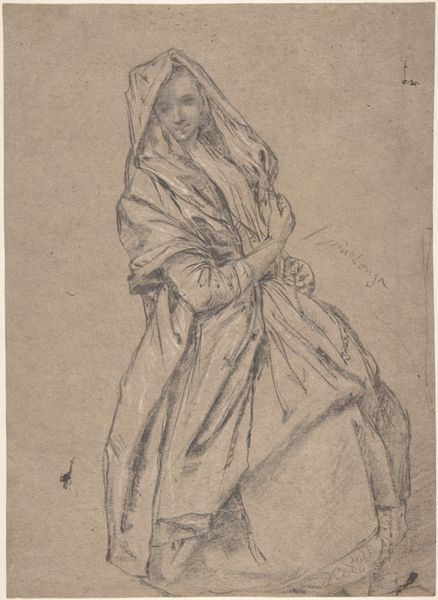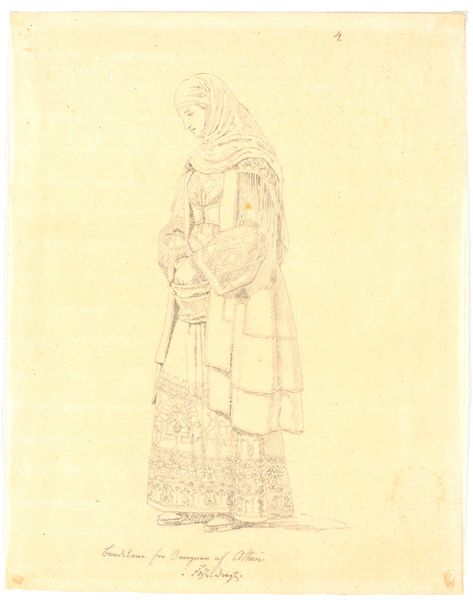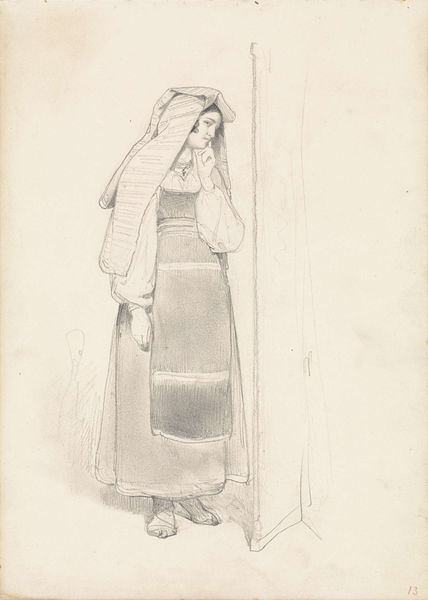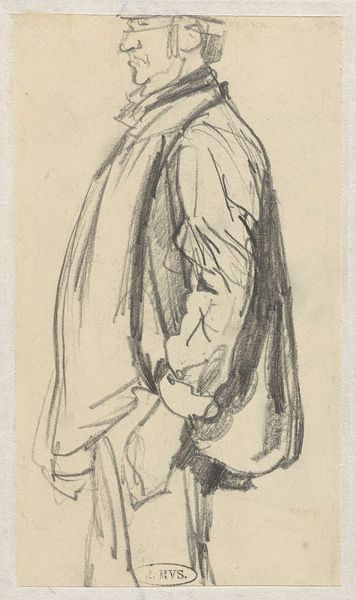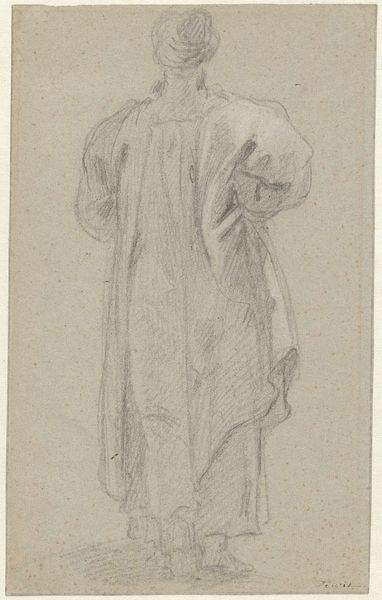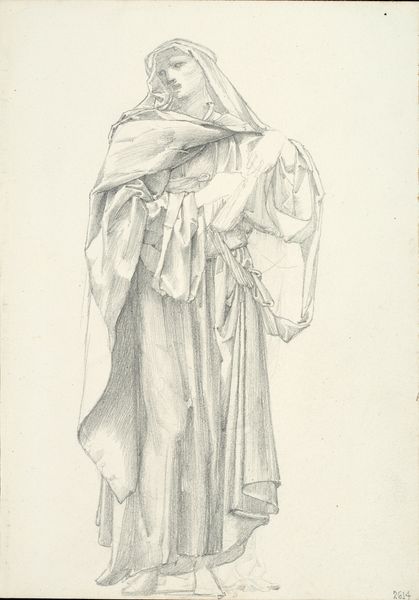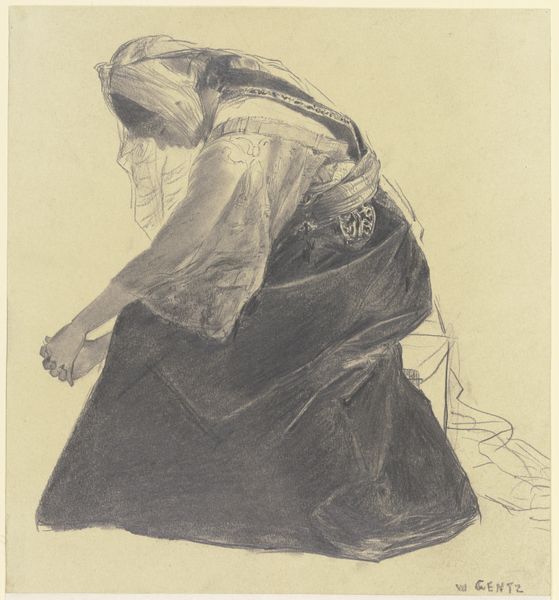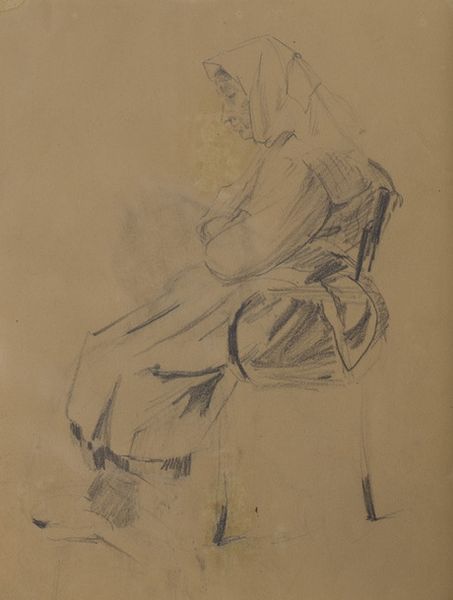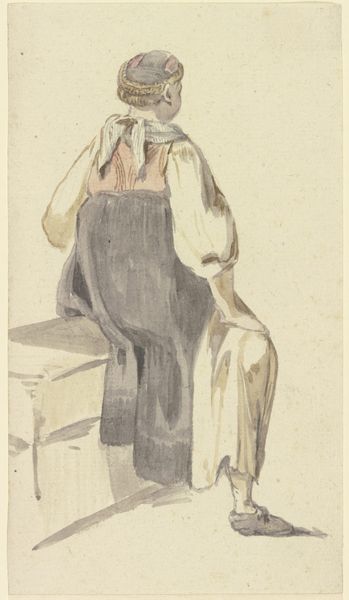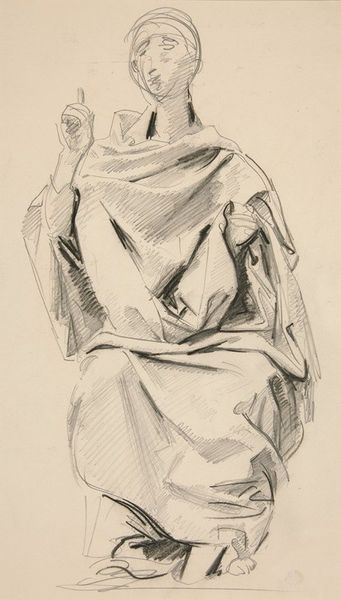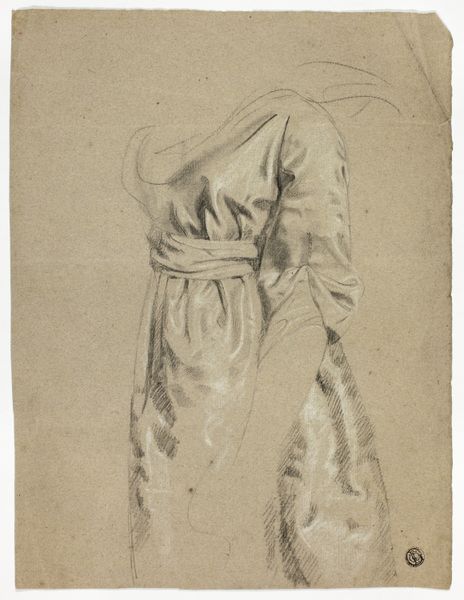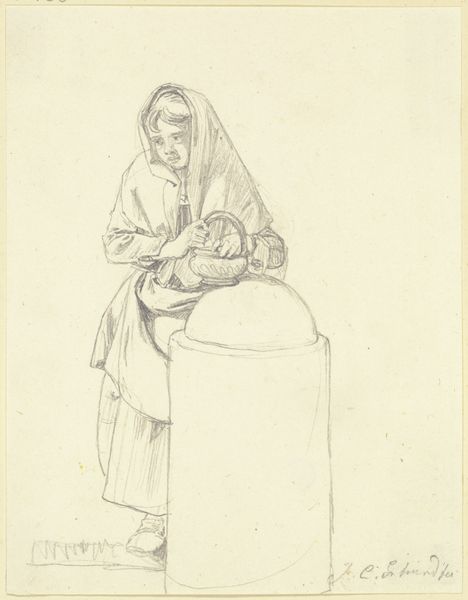
drawing, pencil
#
portrait
#
drawing
#
figuration
#
pencil
#
portrait drawing
#
realism
Dimensions: 248 mm (height) x 160 mm (width) (bladmaal)
Curator: Welcome. Before us stands "Standing Woman with Hand to Face," a pencil drawing created by Wilhelm Marstrand sometime between 1810 and 1873. It's part of the collection at the SMK, the National Gallery of Denmark. Editor: The mood that's conveyed, the weight of the drapery. She seems engulfed by her clothing, a representation of sadness, maybe grief. The textures of the pencil on the paper are delicate. Curator: It's a beautiful piece, a study in concealing emotion, yet so expressive. Considering Marstrand’s larger body of work and his role in shaping Danish Golden Age painting, such figuration, almost theatrical, underscores the visual tropes associated with portraying the female subject at the time. Editor: True, but looking closely, you see the subtle control over light and shadow, rendered entirely by pencil strokes. He builds up form slowly. How does his technique influence the social reading of the woman here? Is her posture not only reflective of emotional distress but also representative of social restrictions placed upon women? Curator: Indeed, the gesture of covering the face could indicate shame or modesty. This piece offers viewers insight into the norms dictated to women as performers of class and decorum at that time. Editor: I find her clothing central. Notice the weight of the cloth, rendered as a near architectural study in and of itself. This seems a clear engagement with materiality; how the garment both burdens and adorns her. What story do the means and materials of production have to tell us here? Curator: Perhaps this drawing presents the societal expectations in tangible terms. Marstrand invites us to acknowledge the complicated, layered dimensions through which individuals, especially women, of the nineteenth century were compelled to self-present and engage with prevailing codes of behaviour. Editor: And to reflect upon the ways our present engagement with materiality, and material burdens, may parallel or depart from what’s presented here. Curator: Absolutely, and that’s precisely why art historical inquiry remains crucial to interpreting the human experience. Editor: For me, art becomes invaluable precisely where material engagement becomes critical inquiry.
Comments
No comments
Be the first to comment and join the conversation on the ultimate creative platform.
